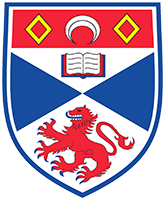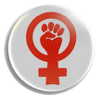

(This event was held in St Andrews on November 21 2018.
Here is Zoë Fairbairns’ contribution.)
St Andrews University in 1967 – the year when I arrived – was not what you might call a breeding ground of sexual radicalism.
Much of the material on my history syllabus was relentlessly patriarchal. I learned about Tom Paine and his Rights of Man but not Mary Wollstonecraft and her Vindication of the Rights of Women. I learned about John Stuart Mill’s philosophy of Utilitarianism, but no-one bothered to mention that he also wrote The Subjection of Women.
Outside the classroom, things weren’t much better.
The University Appointments Board had separate shelves for men’s jobs and women’s jobs.
The student health service, in spite of being part of the NHS, would only give you the Pill if you signed on as a private patient and paid a private patient’s fee.
The beer bar in the students’ union was for men only.
Women in halls of residence were only allowed to have male visitors three afternoons a week. (Male students were allowed female visitors up until 10pm, seven days a week.)
A beauty contest was held once a year to identify the most attractive female first-year student.
There had never been a female president of the SRC, or editor of the student newspaper – or Principal.
In spite of all this, or perhaps because of it, it was through St Andrews that I had my feminist awakening.
I wasn’t actually in St Andrews at the time. It was my third year – the academic year 1969/1970 – and St Andrews had very kindly awarded me a scholarship for a year in the USA, as part of an exchange programme they had with the College of William and Mary in Williamsburg, Virginia.
Here I discovered such concepts as sexism and anti-sexism. I took part in consciousness-raising. I read a book with the mindblowing title Sexual Politics. Until then, I had never imagined that those two words could sit side-by-side in the same phrase.
I learned some women’s history. I began to understand connections between sexism, racism, imperialism and homophobia – links which a later generation would name ‘intersectionality’.
It was all very exciting – and also, I thought, very American. There was nothing like this, I believed, on my side of the Atlantic.
But I was wrong. By the time I got back home, in the summer of 1970, Women’s Liberation groups where forming themselves throughout the UK.
We set one up in St Andrews. We raised our consciousness. In meetings in the Students’ Union and the Castle Inn in North Street, we talked about women’s lives – our own and others’. We talked about work and money and beauty, love and sex and advertising and male violence.
It’s a mark of my naiveté at the time that when one of our members, Paula Jennings, suggested that we talk about rape, I was puzzled. As far as I was concerned, rape was a crime which took place between strangers in dark alleys. Nasty, but what had it to do with feminism? Paula gave a presentation which outlined how rape victims were often accused of “provoking” rape or “asking for it” by dressing or behaving in particular ways. She described how the fear of rape worked as a protection racket: in order to protect yourself from attack by one man, you place yourself under the control of another. I had never heard of such thinking, but as Paula expressed it, it all made sense. It was one of many feminist epiphanies that I owe to my time in St Andrews.
Equal Opportunities
On the issue of equal opportunities, we requested a meeting with the university appointments board, to discuss their discriminatory practices. They gave us a largely sympathetic hearing. They stopped listing female vacancies and male vacancies separately, and they read the riot act to employers who visited the university with the intention of only interviewing male students. Either they interviewed both sexes on equal terms, these employers were told, or they could stay away.
This was several years before the Sex Discrimination Act would have made such reforms compulsory.
We were less successful with our own students’ union. The union employed a middle-aged married couple as live-in managers, and we discovered that the wife was being paid significantly less than her husband for their joint endeavours. This, we decided, must be put right. We approached her, to let her know about the campaign we proposed to run on her behalf.
She told us to mind our own business and get back to our studies.
We protested against the Charities Queen contest, a laddish stunt which set out to identify and reward the most beautiful first year female student. This activity was justified by its organisers on the grounds that it raised funds for charity (you paid to vote). Sue Innes, who was one of us, entered as a protest candidate, with a deliberately non-glamorous photograph of herself, and a manifesto which declared that since she was neither more nor less beautiful than any other woman in the university, she would, if chosen, devote herself to abolishing beauty contests everywhere. She did not win, and the award ceremony went ahead. Paula Jennings and other courageous women invaded the stage – and were physically thrown off by some of the boys.
I was less brave, and contented myself with writing angry articles in the student paper Aien, of which I was editor.
“Slave Auction”
The St Andrews Women’s Liberation group also protested against a so-called “slave auction” in which female students – all volunteers, let it be said, just as the candidates for Charities Queen were all volunteers – were auctioned off to the highest bidder for a date. All for charity, of course. When we succeeded in getting this distasteful little stunt taken off, we were accused by its organisers of being uncharitable.
Our group was mainly university-based, and this was reflected in many of the issues we took up; but we were aware of a wider world, and concerned about it. When in 1971,The Guardian ran an article by Jill Tweedie, exposing the use of mass rape of women as a weapon of war in Bangladesh, we organised a meeting to discuss the issues, and a collection for the survivors, many of whom had been cast out by their communities as a result of the so-called disgrace of being raped by a invading soldiers of the wrong ethnicity and wrong religion.
We were also aware of feminist activities in other parts of the UK – political meetings, demonstrations, cultural events, campaigns. We ordered a boxful of copies of The Body Politic, a collection of writings from Women’s Liberation in Britain. We read and discussed its contents. In 1971, Sue Innes and Stephanie Norris hitch-hiked to London to take part in the first National Women’s Liberation march. They came back with thrilling tales of marching past Mothercare in Oxford Street chanting “Less mother care, more father care”, and of the actor Buzz Goodbody dancing along Piccadilly ironically singing “Keep Young and Beautiful If You Want To Be Loved”, accompanied by music from a wind-up gramophone pushed in a pram.
We went to conferences in Edinburgh, Dundee, Bristol and London, including the ones which discussed and established seven main demands as a shared manifesto for the women’s liberation movement.
These were:
- Equal pay for equal work
- Equal education and equal opportunities
- Free contraception and abortion on demand
- Free 24-hour child care
- Legal and financial independence
- An end to discrimination against lesbians
- Freedom for all women from the threat or use of male violence. An end to the assumptions and institutions which perpetuate male dominance and male violence towards women
(For more on the Seven Demands, click here)
I graduated in 1972 and left St Andrews in 1973. It is for others to tell the story of Women’s Liberation L in St Andrews after that. Click here for Sarah Browne: A Veritable Hotbed of Feminism – Women’s Liberation in St Andrews 1969-1979.
On my own behalf I want to say thanks for my years in St Andrews and the many insights they gave me into gender politics: insights that were reflected the novels I went on to write. And thanks to you all for inviting me here today.
